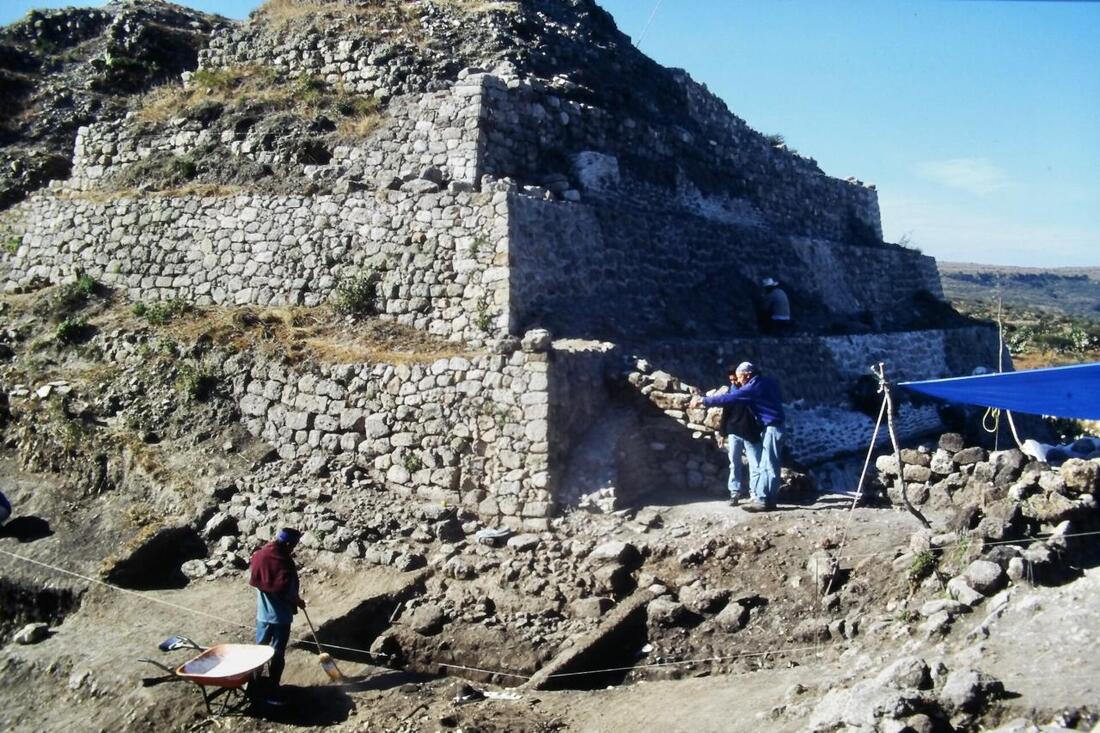 Español
Español
September 8, 2024
by Henry Miller
I first met archaeologist Luis Felipe Nieto, early one November morning in 1995. I had met Don Patterson, a man with extensive archaeological experience here in Mexico, only a couple of days before, and he'd invited me to join him on an excursion into the campo. The destination at the moment of the invitation was yet unclear, at least to me.
As instructed, I arrived at Don's early (0 dark 30). I pulled the string on the door marked #12, stumbled my way in the dark along the treacherous path of the front garden, passed an open doorway in the shape of an ancient Mayan arch and entered the smoke filled kitchen.
Don, in his morning ritual, rummaging about and organizing his field kit, told me to help myself to the pot of coffee and the plate of Teri's famous cookies. Teri was, and still is, the radiant, ageless, humorous, caregiving and ferocious-when-she-wants-to-be cook. As I was knocking back the last of my coffee, in walked a towering figure with a thick, black beard, olive drab, army-issue field jacket and red bandana underneath a wide brim sombrero. He extended his hand and presented himself as Luis Felipe.
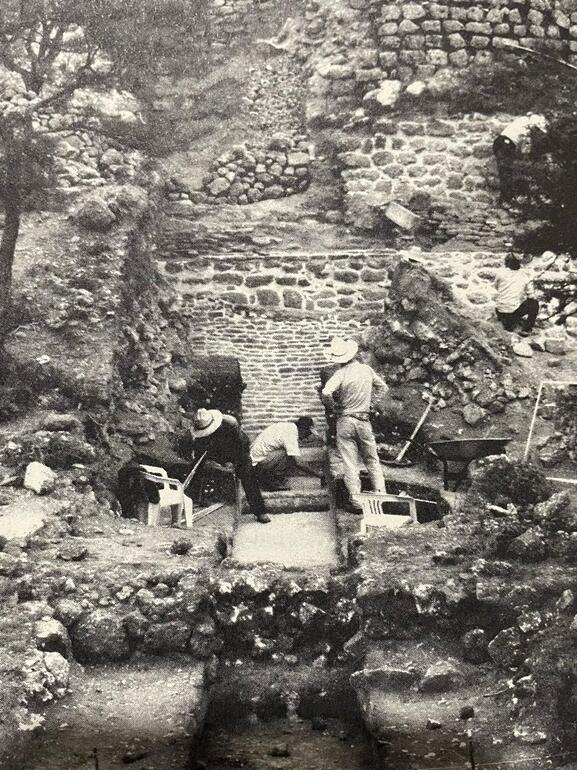
We quickly gathered up a bag of cookies and Don's battle-tested Stanley thermos full of fresh high octane joe. I shouldered my knapsack and followed the two men out into the darkness, not knowing that that day would define my life for all days to come.
Ducking back through the little door out into Calle La Garita we approached a gray pickup parked there with the mythical logo of the National Institute of Anthropology and History (INAH) on the door panel. As Luis Felipe and Don climbed into the cab, their silhouetted heads turned to me, and Don said "We take turns riding in the back." Then, in a hazing ritual, he exclaimed, "And today is your turn." Their laughter at this echoes even now, through the memories, as I put these words on the page.
Winding through the empty streets of San Miguel, down Hospicio left onto Recreo, barreling around el Parque Juarez and into la colonia Guadiana we stopped to pick up the photographer Oscar Pastor Ojeda. Oscar squeezed into the cab with Luis and Don, the laughter now triple the volume as we sped out of town. We were on the "old road" to Guanajuato, the crisp morning air now blasting through my Patagonia fleece. I tightened my bandana as we crossed over the narrow Puente de los Frailes, took the right at the crucero.
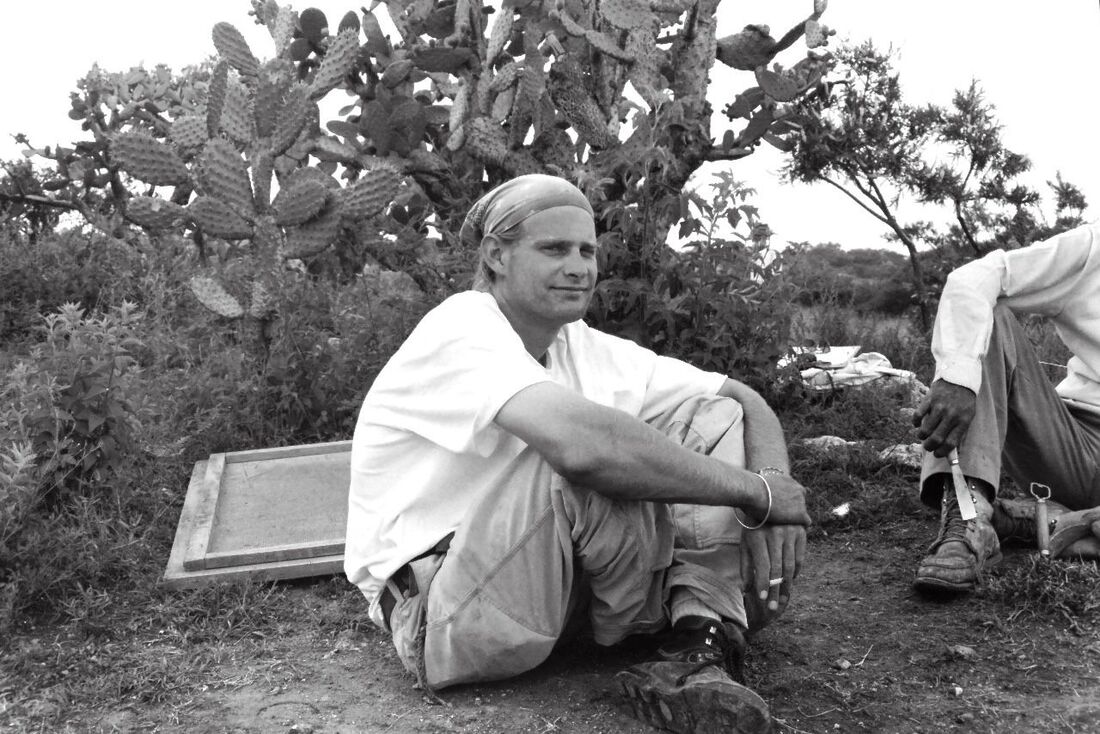
The author
*
Suddenly the truck came to a halt, skidding on the loose gravel, with laughter billowing from the cab. An elderly man with a white sombrero and clean mustache was standing alone on the side of the road, arms at his side waiting patiently for us in the cold. With visible effort, he swung his heavy rafia grocery bag over the side and into the bed of the truck. He climbed aboard and settled in beside me as we sped off once again, now heading due west towards the dam of the Presa Allende.
The stranger offered me his hand and over the rushing wind said that his name was René Salinas. Don René was from the small community of Orduña situated along the lower stretch of the Rio Laja that winds past the town of Comonfort, continuing on to its final destination and drainage into "el Lago de Chapala." Eager to make friends, René commented that during his youth he taught basic reading and writing skills in a makeshift school house built of discarded vegetable crates to the children of migrant farm workers in the salad bowl region of California back in the 60's.
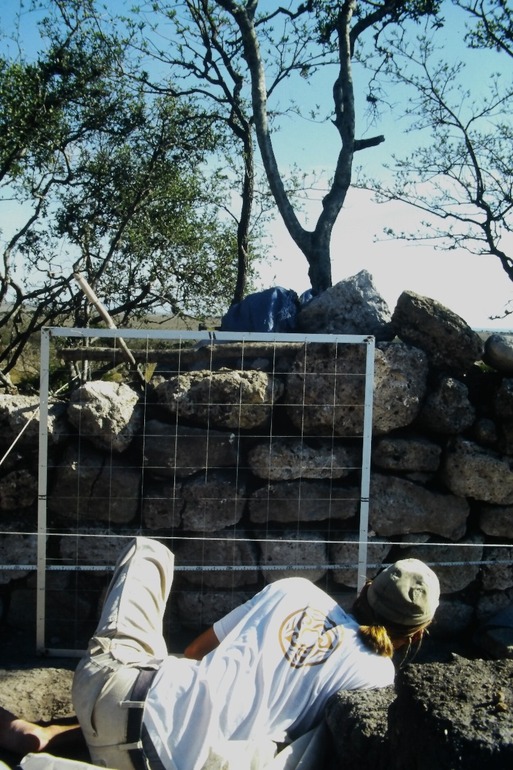
The author
*
We crossed the dam, making our way up the hill past the Agustin Gonzalez corner store, then a sharp left on to a "bumpy" dirt road that immediately enveloped the back of the truck in a cloud of dust. As we drove on, the dust became relatively tolerable. But there was no escaping the unforgiving skeletal jarring that would later make me fight for a comfortable seat up front.
The truck would slow to a halt every few kilometers as we came upon gates strung together with barbed wire that separated the various ranchos along the primary access road that was taking us deeper into what seemed uninhabited territory. There were no villages or houses visible. Now and again we'd come across a pickup pulling a cattle trailer with maybe a family huddled together in the back. But other than that, the territory seemed uninhabited. The landscape however was constantly changing. Densely shaded splotches of oak trees would transition into open grassland with huizaches and mezquites giving the feel of the Serengeti. We spotted several roadrunners that darted across the road behind us as soon as the coast was clear.
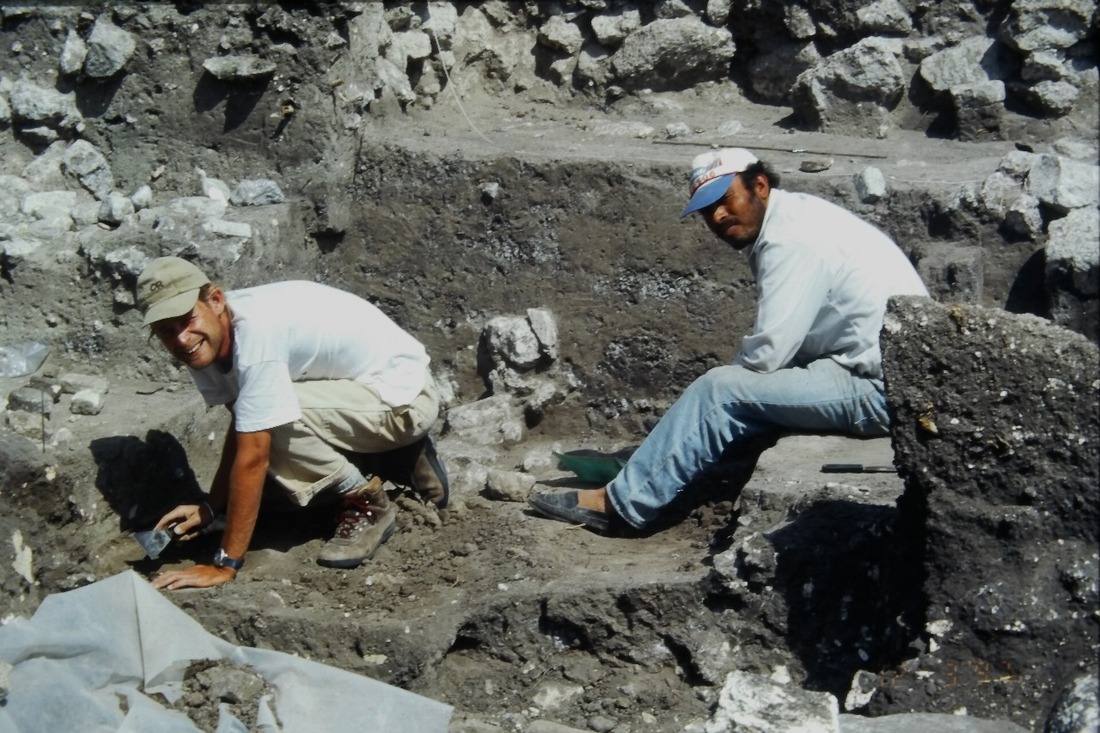
The author (left)
*
As we climbed gently I could now see the top edges of canyons that sliced deep through the soft rolling hillsides. I was overcome with wonderment; an unfamiliar sensation, hard to explain, but that of being transported into the past. The truck came to a stop upon reaching a larger gate, painted blue and made of metal tubes. The laughter too had stopped. As we passed through the gate I could hear the three up front talking, but could not make out what they were saying. Their tone was serious. With windows down they were pointing off towards the mountains that lined the horizon. Something was out there.
My eyes desperately scanned the terrain unfolding before me. I followed the lines of the canyons in the foreground, then the jagged contour of the distant mountains and the flat plateau that stretched long between them.
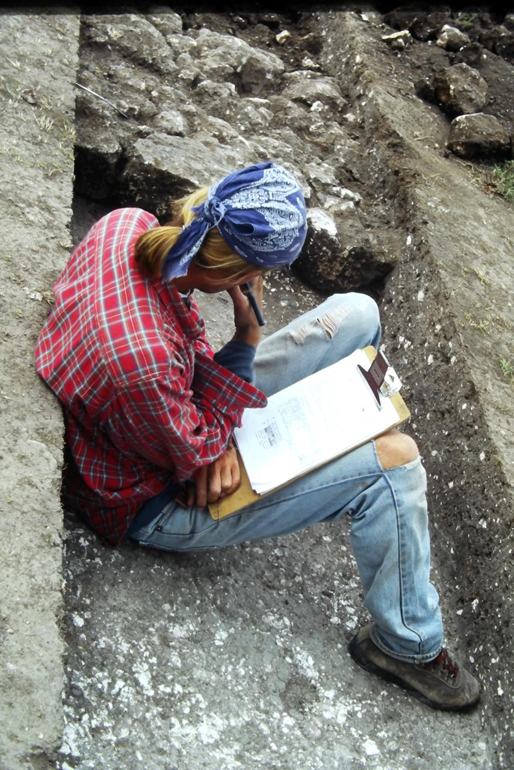
The author
*
I could sense the excitement in the voices coming from the cab as we advanced, slower now. Then there was silence. Only the sound of the wheels passing over earth softened with the freshness of morning dew, and under the bluest of sky that anyone could ask for if indeed it were to be their final wish. Time stood still.
I had also found a stillness deep within when René turned to me, eyes filled with kindness, his face lined with the expressions of a man who'd overcome, and was strengthened by the hardships of the labor camps imposed upon his generation. He smiled, and asked me if I had seen the pyramid. It was only then that I made out the outline of a geometrical mound, as the rising sun cast its light upon the eastern façade of the archaeological site known today as the Canyon of the Virgen.
***
In honor of
Luis Felipe Nieto Gamiño,
dear colleague, teacher, giant
December 28, 1954 – August 14, 2024
QEPD / RIP
**************
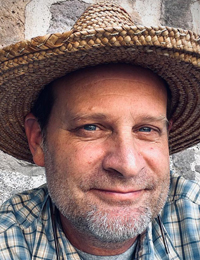
Henry Miller would go on to be the photographer of that first excavation team from 1996-1999, taking over 6,000 photographs, and making hundreds of drawings, documenting the excavations, capturing the faces of those who were there, and giving testimony to the care and quality of their work.
Today, Don is hard at work scanning the black and white negatives and slides taken by Henry and Luis Felipe in order to create a digital archive of that first stage of the Canyon of the Virgen excavations.
Henry is now the director of the civil association El Maíz Más Pequeño and together with his team are piloting an educational program that addresses climate change adaptation and the resultant human migration.
www.elmaizmaspequeno.org
*
If you are interested in contributing to either of these projects, El Maíz Más Pequeño or Don's photo scanning, please contact Don or Henry to find out how you can help.
For more about the Canyon of the Virgen and other Mesoamerican monuments, read and enjoy Journey to Xibalba: A Life in Archaeology by Don Patterson.
donaldopatterson@gmail.com
henry@elmaizmaspequeno.org
**************
*****
Please contribute to Lokkal,
SMA's online collective:
 ***
***
Discover Lokkal:
Watch the two-minute video below.
Then, just below that, scroll down SMA's Community Wall.
Mission

Visit SMA's Social Network
Contact / Contactar

